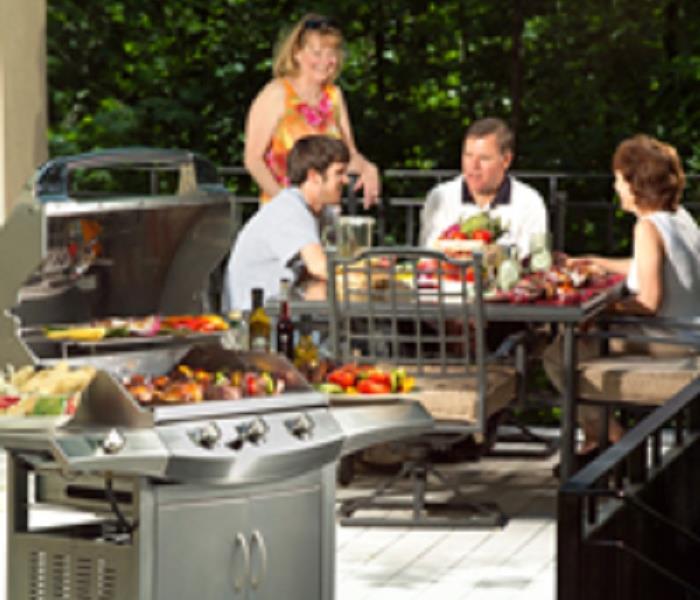General Grilling Safety
5/31/2016 (Permalink)
With more Americans lighting their grills than ever before, it’s important to remember that a fun barbecue is a safe barbecue.
The following safety tips are designed to guide you through the grilling process. Remember, anytime you work with fire, there’s a chance of getting burned. So, take precautions. Common sense and planning will prevent injuries.
Always read the owner's manual before using your grill and follow specific usage, assembly, and safety procedures. Contact the grill manufacturer if you have specific questions. (Be sure to locate your model number and the manufacturer’s consumer inquiry phone number and write them on the front page of your manual.)
Barbecue grills are designed for outdoor use, only. Never barbecue in your trailer, tent, house, garage, or any enclosed area because carbon monoxide may accumulate and kill you.
Set up your grill in an open area that is away from buildings, overhead combustible surfaces, dry leaves, or brush. Be sure to avoid high traffic areas and always barbecue in a well-ventilated area. Be aware of wind-blown sparks.
When using a barbecue grill, be sure that all parts of the unit are firmly in place and that the grill is stable (can’t be tipped over).
If electrically-operated accessories are used (rotisseries, etc.), be sure they are properly grounded in accordance with local codes. Electrical cords should be placed away from walkways or anywhere people can trip over them.
Use barbecue utensils with long handles (forks, tongs, etc.) to avoid burns and splatters.
Wear clothing that does not have hanging shirt tails, frills, or apron strings that can catch fire, and use flame-retardant mitts when adjusting hot vents.
To put out flare-ups, either raise the grid that the food is on, spread the coals out evenly, or adjust the controls to lower the temperature. If you must douse the flames with a light spritz of water, first remove the food from the grill.
Use baking soda to control a grease fire and have a fire extinguisher handy. A bucket of sand or a garden hose should be near if you don’t have a commercial extinguisher.
These naturally heat resistant pads are usually made of lightweight composite cement or plastic and will protect your deck or patio from any grease that misses the drip pan.
Don’t allow anyone to conduct activity near the grill when in use or immediately following its use. The grill body remains hot up to an hour after being used.
Never attempt to move a hot grill. It’s easy to stumble or drop it and serious burns could result.
These tips are not intended to be an exhaustive review of safety guidelines and should not be interpreted as precluding other procedures, which would enhance safe barbecue grill operations. Issuance of these safety tips should not be construed as an undertaking to perform services on behalf of any party either for their protection or the protection of third parties. The Hearth, Patio & Barbecue Association assumes no liability for reliance on the contents of this information.
Printable Fact Sheet:
http://www.hpba.org/consumers/barbecue/hpba/fileadmin/factsheets/product/FS_SafeBBQ.pdf





 24/7 Emergency Service
24/7 Emergency Service